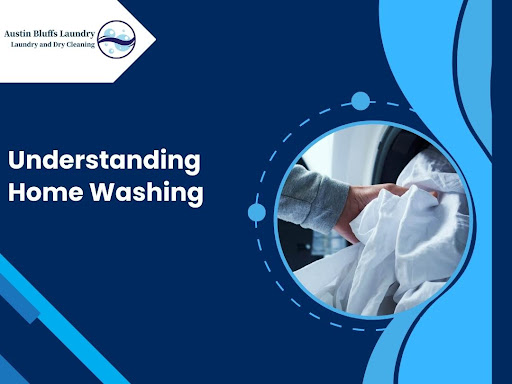Maintaining a wardrobe can be challenging, especially when it comes to delicate and high-value items. You’ve likely faced the frustration of finding a stain on your favorite silk blouse or noticing your wool coat looking less pristine after a home wash. Many people grapple with deciding whether to use dry cleaning services or to rely on home washing. On one hand, dry cleaning can seem costly, but on the other hand, home washing can risk damaging your garments. Adding to the dilemma, the convenience of services like free delivery from dry cleaners and the accessibility of your local laundry mat complicate the decision further. This blog will delve into the differences between dry cleaning and home washing, providing you with the essential information to keep your clothes looking their best.
Understanding Dry Cleaning

Dry cleaning gently cleans your clothes using special solvents instead of water. Instead, it uses chemical solvents to remove stains and dirt. Here’s how it typically works:
- Inspection and Tagging: Clothes are inspected for stains and damages and tagged to ensure they are returned to the correct owner.
- Pre-Treatment: Stains are pre-treated with special cleaning agents to break down the stains before the main cleaning process.
- Cleaning: Clothes are placed in a large machine and cleaned with a chemical solvent, usually perchloroethylene (perc) or hydrocarbon solvents.
- Post-Treatment: Any remaining stains are treated, and the clothes are pressed and finished to look their best.
Understanding Home Washing
Home washing means cleaning your clothes with water and detergent in a washing machine.
The process typically includes:
- Sorting: Clothes are sorted by color, fabric type, and washing instructions.
- Loading: Clothes are placed in the washing machine with the appropriate amount of detergent.
- Washing: The machine gently shakes the clothes in water to wash away dirt and stains.
- Drying: Clothes are either tumble-dried in a dryer or air-dried on a line or rack.
Comparing Dry Cleaning and Home Washing
1. Effectiveness in Stain Removal
- Dry Cleaning: In professional dry cleaning, potent solvents are employed to tackle tough, oil-based stains that regular detergents struggle with. The pre-treatment phase ensures that specific stains are targeted and effectively removed.
- Home Washing: Home washing can be effective for everyday dirt and minor stains but may struggle with oil-based stains or set-in dirt. Over time, repeated washing can lead to the buildup of detergent residue, which can dull the fabric’s appearance.
2. Fabric Care and Longevity
- Dry Cleaning: The dry cleaning process is gentle on fabrics, helping to preserve the texture, color, and shape of garments. It’s particularly beneficial for delicate fabrics such as silk, wool, and cashmere, which can be easily damaged by water and agitation in a washing machine.
- Home Washing: Washing machines can be harsh on delicate fabrics. The combination of water, detergent, and mechanical agitation can cause fabrics to shrink, fade, or lose their shape. Delicate items often require special care instructions that may not be easily managed at home.
3. Convenience and Time
- Dry Cleaning: While it requires dropping off and picking up clothes, many dry cleaners offer free delivery and pickup services, adding convenience. Professional care also means less time spent on ironing and finishing garments at home.
- Home Washing: Washing clothes at home is convenient as you can do it at any time. However, it can be time-consuming to sort, wash, dry, and iron clothes, especially for larger households.
4. Cost
- Dry Cleaning: It can be more expensive than home washing, especially for items that require frequent cleaning. However, the cost reflects the professional care and longer lifespan of garments.
- Home Washing: Generally more cost-effective in the short term, but the potential damage to delicate or high-value items can lead to higher long-term costs due to frequent replacements.
Why Choose Dry Cleaning for New or Delicate Clothes?

1. Protection of Fabric Integrity
Delicate fabrics like silk, wool, and linen need a soft touch to stay in good shape and look their best. The dry cleaning process minimizes the risk of damage by avoiding water and harsh agitation. For example, silk can lose its sheen and develop water spots if washed improperly, while wool can shrink and become misshapen.
2. Maintaining Appearance
Dry cleaning helps maintain the original appearance of clothes. It prevents color fading and fabric distortion, ensuring your clothes look new for longer. The solvents used in dry cleaning are designed to clean deeply without causing damage, preserving the vibrancy and structure of the fabric.
3. Professional Stain Removal
Stains like oil, grease, and ink can be challenging to remove at home. Dry cleaners have access to specialized cleaning agents and techniques that can effectively tackle these tough stains without damaging the fabric. The pre-treatment process ensures targeted stain removal, enhancing the overall cleanliness of the garment.
4. Convenience and Care
Many dry cleaning services offer free delivery and pickup, making it convenient for busy individuals. This service saves time and effort, allowing you to focus on other tasks while ensuring your clothes receive professional care. The added convenience of having clothes cleaned, pressed, and ready to wear upon return is invaluable.
Practical Tips for Home Washing Delicate Items
If you prefer to wash some delicate items at home, here are some tips to minimize damage:
- Use Gentle Detergents: Opt for gentle detergents specially crafted for delicate fabrics to ensure they’re well taken care of.
- Hand Wash When Possible: Hand washing reduces the risk of damage from mechanical agitation.
- Cold Water: Keep your clothes safe by washing them in cold water, which helps prevent shrinking and color bleeding.
- Avoid Overloading: Do not overload the washing machine to allow garments to move freely.
- Use Mesh Bags: Place delicate items in mesh laundry bags to protect them during the wash cycle.
- Air Dry: Avoid using a dryer; instead, air dry delicate items by laying them flat on a clean surface.
Conclusion: Making the Right Choice for Your Wardrobe
When it comes to caring for your wardrobe, understanding the differences between dry cleaning and home washing is crucial. While home washing is suitable for everyday items and casual wear, dry cleaning offers significant advantages for new, delicate, or high-value garments. The professional care, effective stain removal, and gentle handling provided by dry cleaning can help preserve the beauty and longevity of your clothes.
By choosing dry cleaning for your delicate and new items, you ensure they remain in pristine condition, free from damage and wear. The convenience of free delivery and pickup services further enhances the appeal of professional dry cleaning, saving you time and effort while providing expert care for your wardrobe. So next time you’re faced with the choice, consider the benefits of dry cleaning to keep your clothes looking new and fabulous for years to come.

